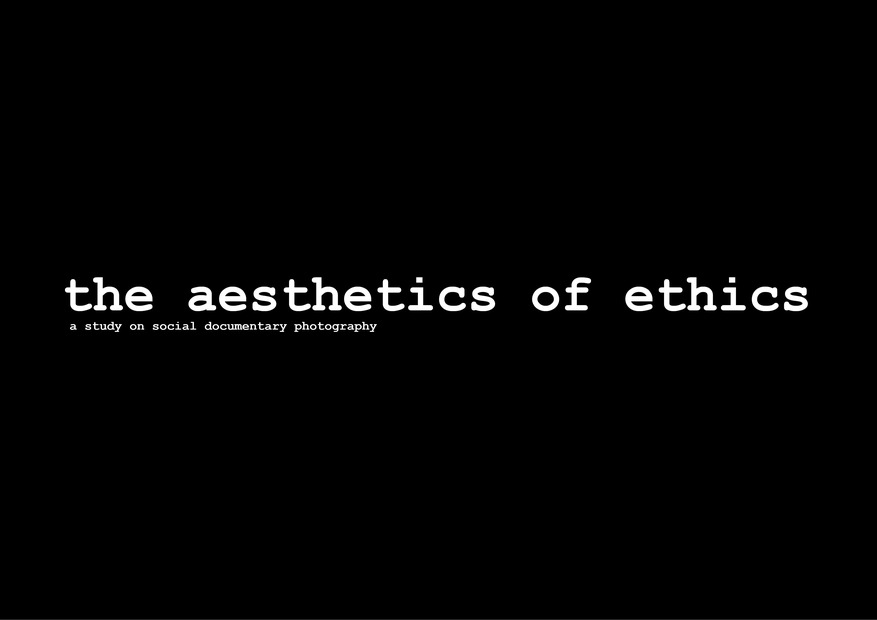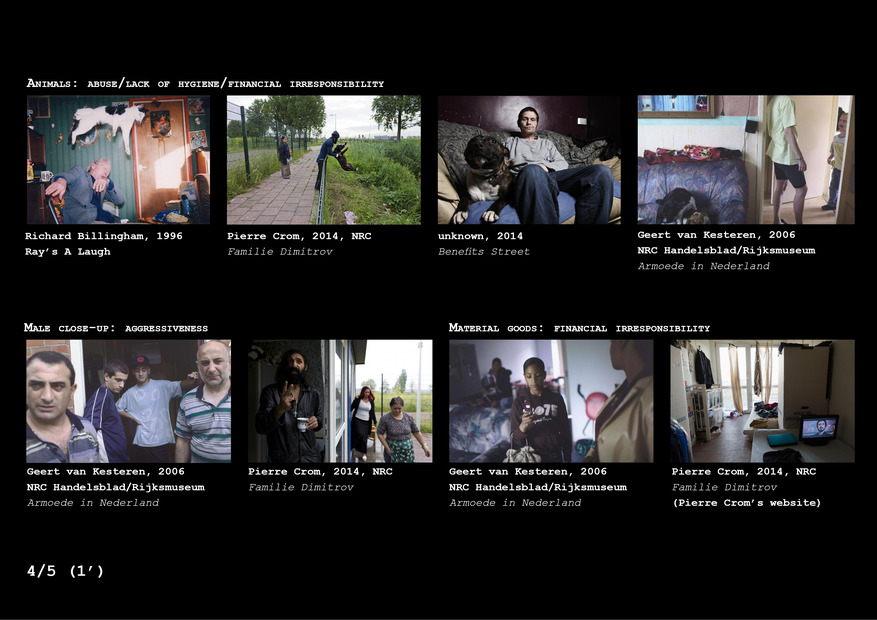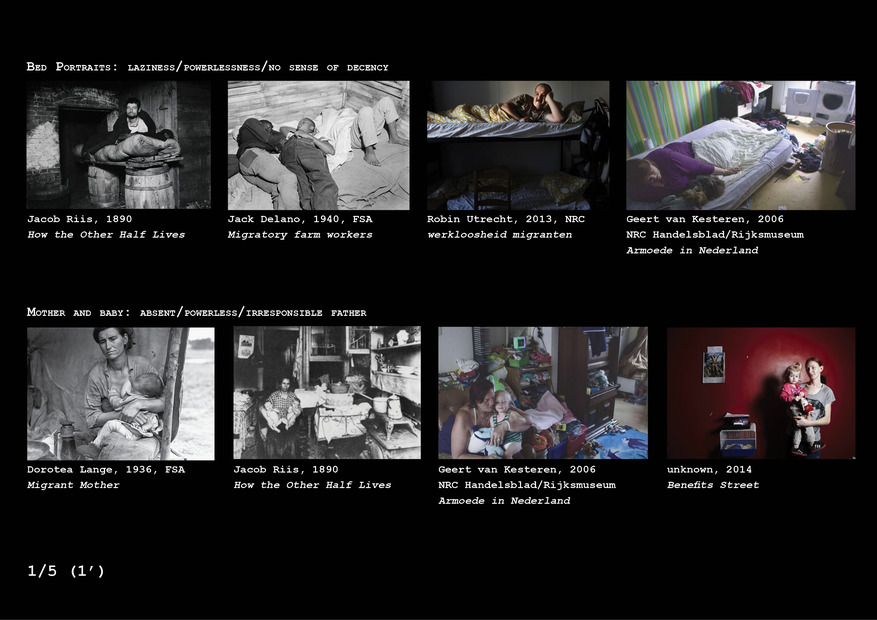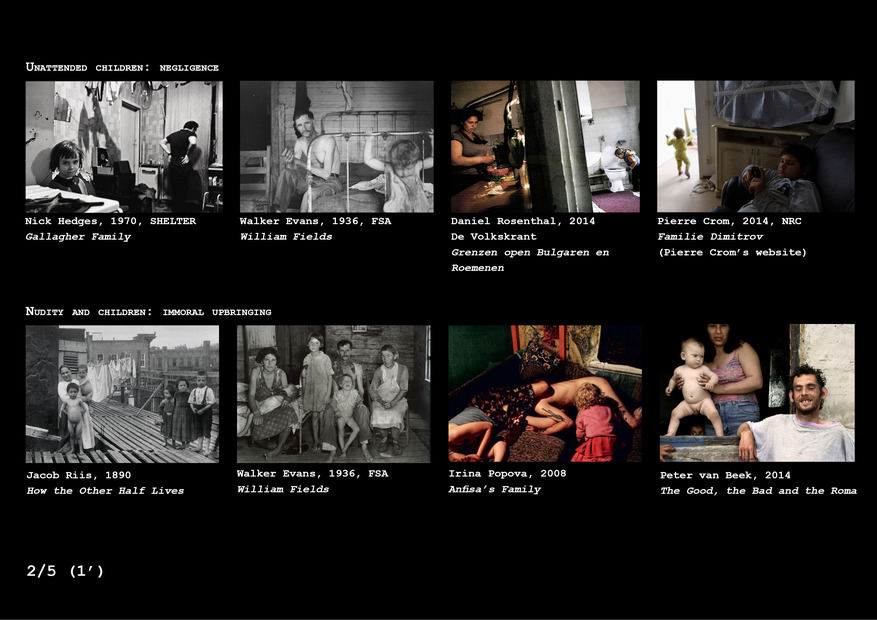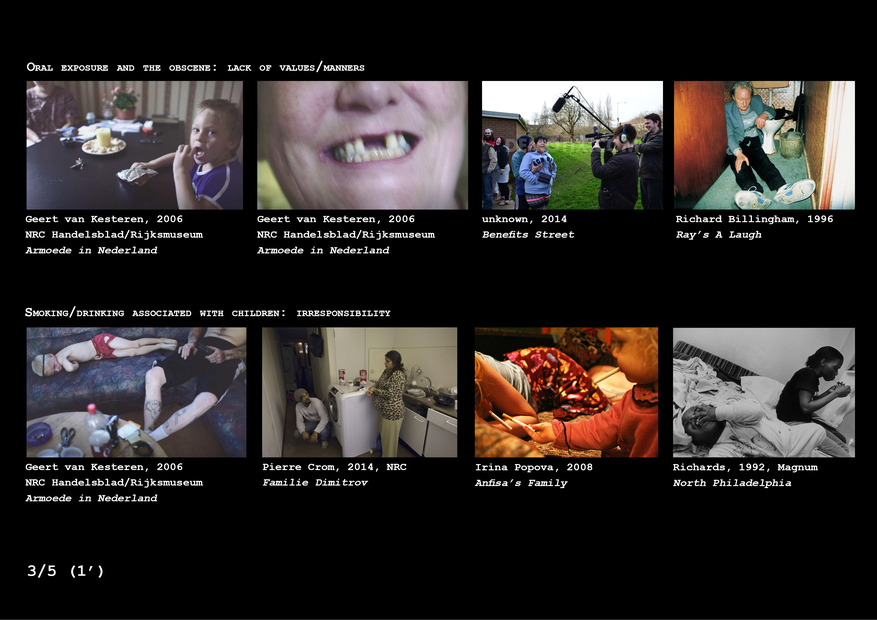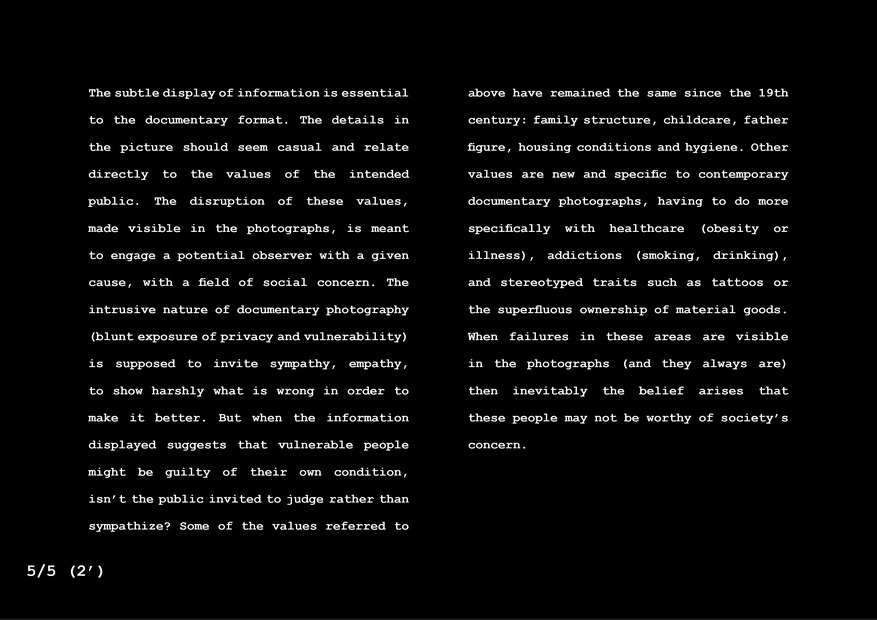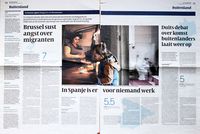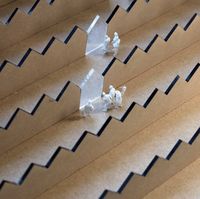User:Luisa Moura/research/work/Luisa Moura, the aesthetics of ethics, 2015: Difference between revisions
Luisa Moura (talk | contribs) No edit summary |
Luisa Moura (talk | contribs) No edit summary |
||
| Line 1: | Line 1: | ||
<div style='font-family:Courier,Sans;font-size:12px;color:#000000'> | <div style='font-family:Courier,Sans;font-size:12px;color:#000000'> | ||
(Abstract) | |||
[[File: | [[File:IMAGE01.jpg|thumbnail|200px]][[File:IMAGE04.jpg|thumbnail|200px]][[File:IMAGE02.jpg|thumbnail|200px]][[File:IMAGE03.jpg|thumbnail|200px]][[File:140202-VOLKSKRANT.gif|200px]] | ||
[[File: | |||
[[File: | |||
[[File: | |||
The aesthetics of ethics is a research on photography, regarding the social documentary genre. It reflects on the way photography is used to illustrate and communicate social conflict. | The aesthetics of ethics is a research on photography, regarding the social documentary genre. It reflects on the way photography is used to illustrate and communicate social conflict. | ||
The documentary format is imbued with a great deal of realism, claiming minimal interference with the scene it witnesses. It often displays individuals within their intimate environment, exposing their vulnerability in order to illustrate a given topic with public relevance. Its intrusive nature is considered to be legitimate, once it informs. The blunt exposure to society’s frailties appears to be necessary to raise empathy among citizens and to trigger positive mechanisms of social support. To accept its harsh nature became a form of ethical burden; it is not easy to look at, but it’s a social duty to do so. This research looks at the social reportage as an illustration of ethical concern. It attempts to reflect on the need to portray error in order to address political or social reform. | The documentary format is imbued with a great deal of realism, claiming minimal interference with the scene it witnesses. It often displays individuals within their intimate environment, exposing their vulnerability in order to illustrate a given topic with public relevance. Its intrusive nature is considered to be legitimate, once it informs. The blunt exposure to society’s frailties appears to be necessary to raise empathy among citizens and to trigger positive mechanisms of social support. To accept its harsh nature became a form of ethical burden; it is not easy to look at, but it’s a social duty to do so. This research looks at the social reportage as an illustration of ethical concern. It attempts to reflect on the need to portray error in order to address political or social reform. | ||
[[File:LM_01.jpg]][[File:LM_02.jpg]][[File:LM_03.jpg]][[File:LM_04.jpg]][[File:LM_05.jpg]][[File:LM_06.jpg]] | |||
[[File: | |||
Revision as of 21:22, 3 August 2015
(Abstract)
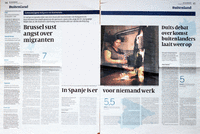
The aesthetics of ethics is a research on photography, regarding the social documentary genre. It reflects on the way photography is used to illustrate and communicate social conflict.
The documentary format is imbued with a great deal of realism, claiming minimal interference with the scene it witnesses. It often displays individuals within their intimate environment, exposing their vulnerability in order to illustrate a given topic with public relevance. Its intrusive nature is considered to be legitimate, once it informs. The blunt exposure to society’s frailties appears to be necessary to raise empathy among citizens and to trigger positive mechanisms of social support. To accept its harsh nature became a form of ethical burden; it is not easy to look at, but it’s a social duty to do so. This research looks at the social reportage as an illustration of ethical concern. It attempts to reflect on the need to portray error in order to address political or social reform.
